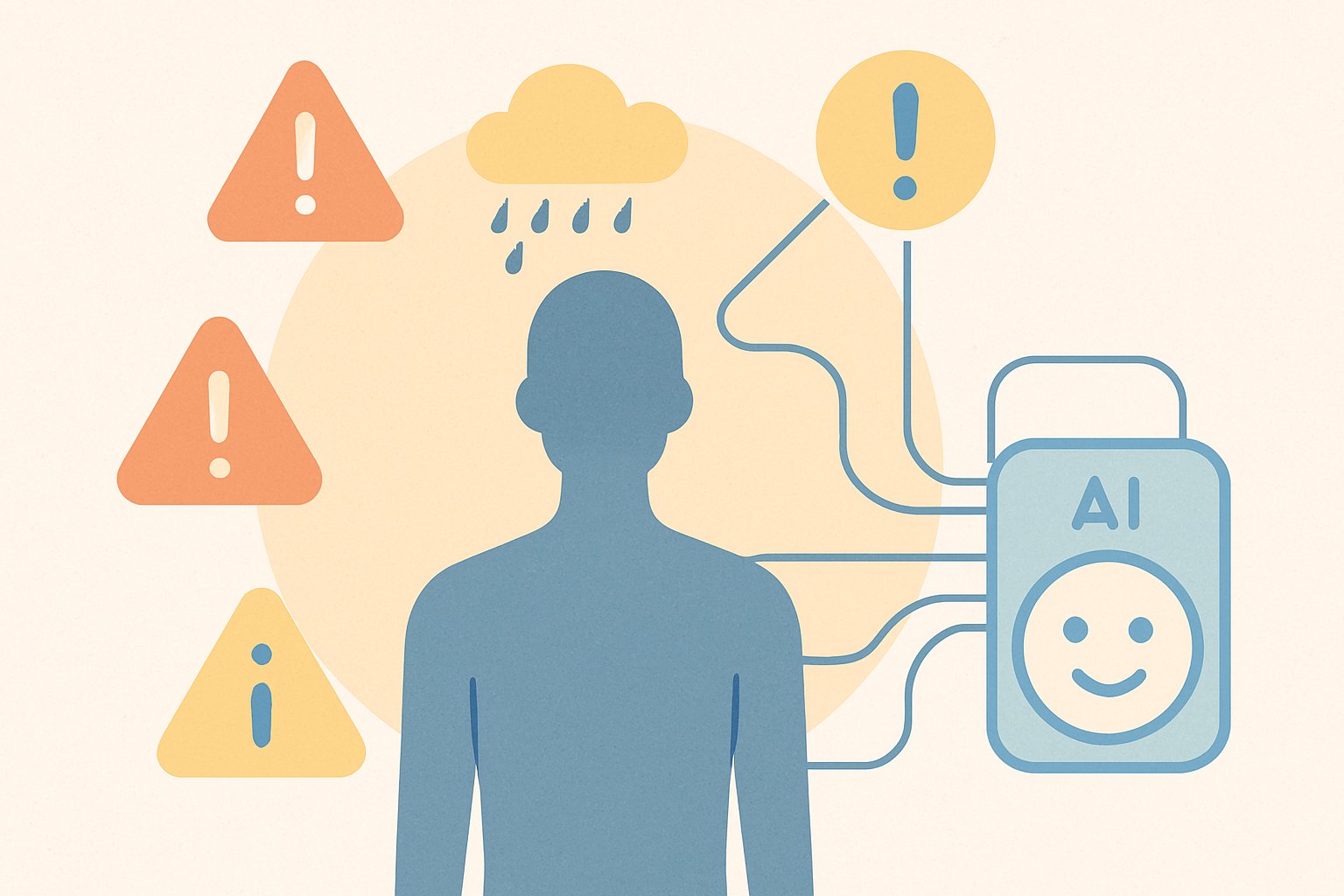
AI CERTS
5 hours ago
How Mental Health AI Flags Risks Early
Rising Early Warning
Global data underscore urgent needs. The 2023 CDC survey found 20.4% of U.S. students considered suicide last year. Meanwhile, social platforms host billions of daily posts that could surface those signals earlier. Recent JMIR studies report transformer models achieving AUC scores near 0.89 on helpline chats with average lead times of 7.2 days. Consequently, helplines, schools, and enterprises are piloting automated triage to prioritize scarce counselors.

However, backlash over data sharing still shapes policy. The Crisis Text Line incident reignited scrutiny on consent when training commercial models with sensitive chats. These concerns frame every deployment decision today.
Such context shows why proactive detection matters. Nevertheless, it also highlights trust gaps. Therefore, organizations must weigh benefits against privacy risks before scaling.
How Detection Works
Mental Health AI leverages digital phenotyping. Models ingest language, emojis, posting cadence, and sometimes images. Additionally, transformer architectures learn contextual patterns far beyond keyword spotting. Explainability layers like SHAP then highlight influential phrases, giving clinicians transparent rationales.
Multimodal pipelines boost recall but raise identifiability concerns. Furthermore, equity audits reveal uneven performance across races and languages. A Reuters 2024 study found depression detection models were three times less accurate for Black users. Consequently, diverse training data remain essential.
False positives also challenge teams. High sensitivity can swamp staff with alerts, while low sensitivity risks missed crises. Therefore, tuning thresholds and retaining human review loops is vital.
These technical mechanics inform operational design. In contrast, stakeholder engagement defines whether solutions gain lasting acceptance.
Deployment Case Studies
Helplines lead the field. Crisis services route incoming texts through classifiers; top-risk conversations jump the queue for rapid human response. JMIR’s 2025 paper documented 0.79 accuracy in a youth helpline trial using explainable transformers.
School systems follow closely. Lightspeed reported scanning 454 million items last year, flagging 82,392 high-risk incidents. However, independent audits are absent, and educators worry about unnecessary police referrals.
Enterprise wellness programs also test Social Media Monitoring tools that scrape internal collaboration feeds for warning signs. Moreover, several startups promise dashboards integrating Slack, Teams, and email signals. Yet many implementations stay under nondisclosure agreements, limiting scrutiny.
These varied pilots illustrate scale potential. Nevertheless, transparent metrics and outcome studies remain scarce, slowing broader trust.
Benefits And Tradeoffs
Automated triage offers clear advantages:
- Early identification can extend intervention windows by a week or more.
- Scalability allows monitoring millions of posts without proportional staff growth.
- Structured insights support data-driven Prevention research agendas.
However, several risks persist:
- Bias may exclude vulnerable demographics.
- False alarms can trigger harmful escalations.
- Opaque data use undermines user trust.
Consequently, balanced governance frameworks are mandatory. Furthermore, frontline workers interviewed in BMC studies emphasize keeping humans in the loop to preserve empathy.
These pros and cons guide investment choices. Subsequently, leaders should benchmark models against demographic slices before deployment.
Governance And Ethics
Regulators are paying attention. The EU AI Act classifies high-risk systems that influence health decisions. Meanwhile, U.S. states debate school monitoring laws and privacy safeguards. Therefore, compliance teams must map jurisdictional overlaps early.
Consent remains the flashpoint. Academic editorials call for explicit opt-in when using crisis data for training. Additionally, experts demand independent ethics boards and transparent reporting on performance by race, age, and language.
Equity auditing is another cornerstone. Moreover, open benchmarks encourage vendors to publish granular error rates. In contrast, black-box claims erode credibility fast.
Robust governance builds community trust. Consequently, organizations that publish audits often gain smoother adoption pathways.
Future Research Paths
Evidence gaps still hinder momentum. Few prospective trials link AI flagging to reduced self-harm attempts. Additionally, most studies rely on convenience datasets from single platforms, limiting generalizability.
Researchers therefore prioritize three directions:
- Multilingual, multimodal datasets reflecting varied demographics.
- Randomized controlled trials measuring clinical outcomes, not just detection metrics.
- Open-source toolkits for standardized auditing workflows.
Meanwhile, collaboration between technologists and clinicians will accelerate responsible innovation. Professionals can enhance their expertise with the AI Healthcare Specialist™ certification.
These forward paths will refine impact evidence. Nevertheless, industry must sustain transparency to convert findings into trusted products.
Upskilling For Teams
Organizations adopting Mental Health AI need multidisciplinary talent. Data scientists must understand clinical nuance, while clinicians learn model limitations. Moreover, policy experts translate findings into compliant workflows.
Structured learning programs fill gaps. Consequently, leaders encourage staff to pursue specialized credentials covering Social Media Monitoring ethics, model evaluation, and crisis Prevention workflows.
Such targeted education accelerates safe deployment. Therefore, continuous training remains as critical as code quality.
Conclusion And Action
Mental Health AI now spots crisis signals earlier than traditional eyes. Furthermore, transformer advances and multimodal inputs drive accuracy gains, yet bias, privacy, and regulatory scrutiny demand vigilant oversight. Balanced governance, rigorous audits, and human oversight mitigate harms while unlocking scalable Prevention benefits. Consequently, forward-looking teams should pilot transparently, measure real outcomes, and invest in ongoing education.
Ready to lead responsible innovation? Explore specialized learning through the AI Healthcare Specialist™ program and empower your team today.



